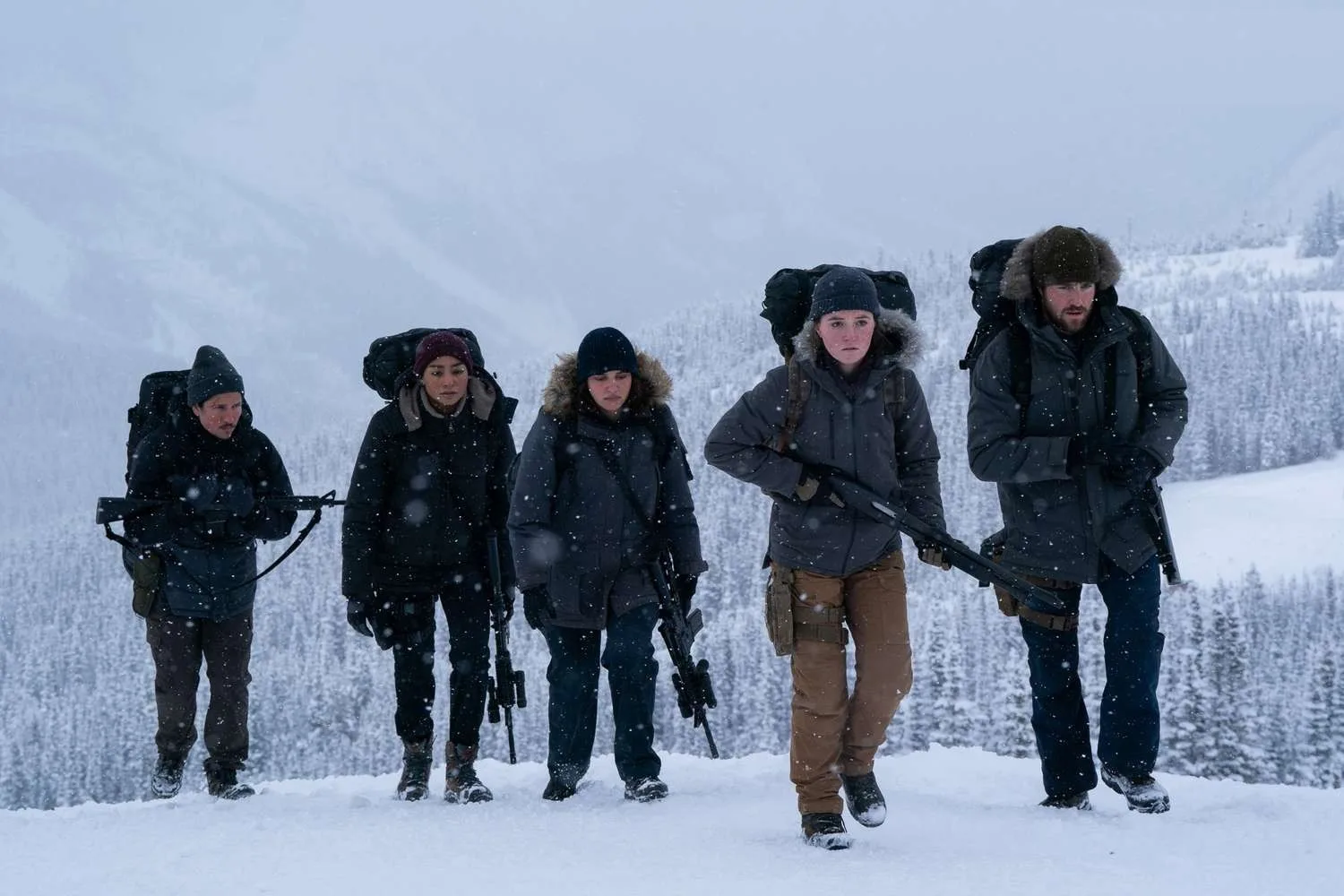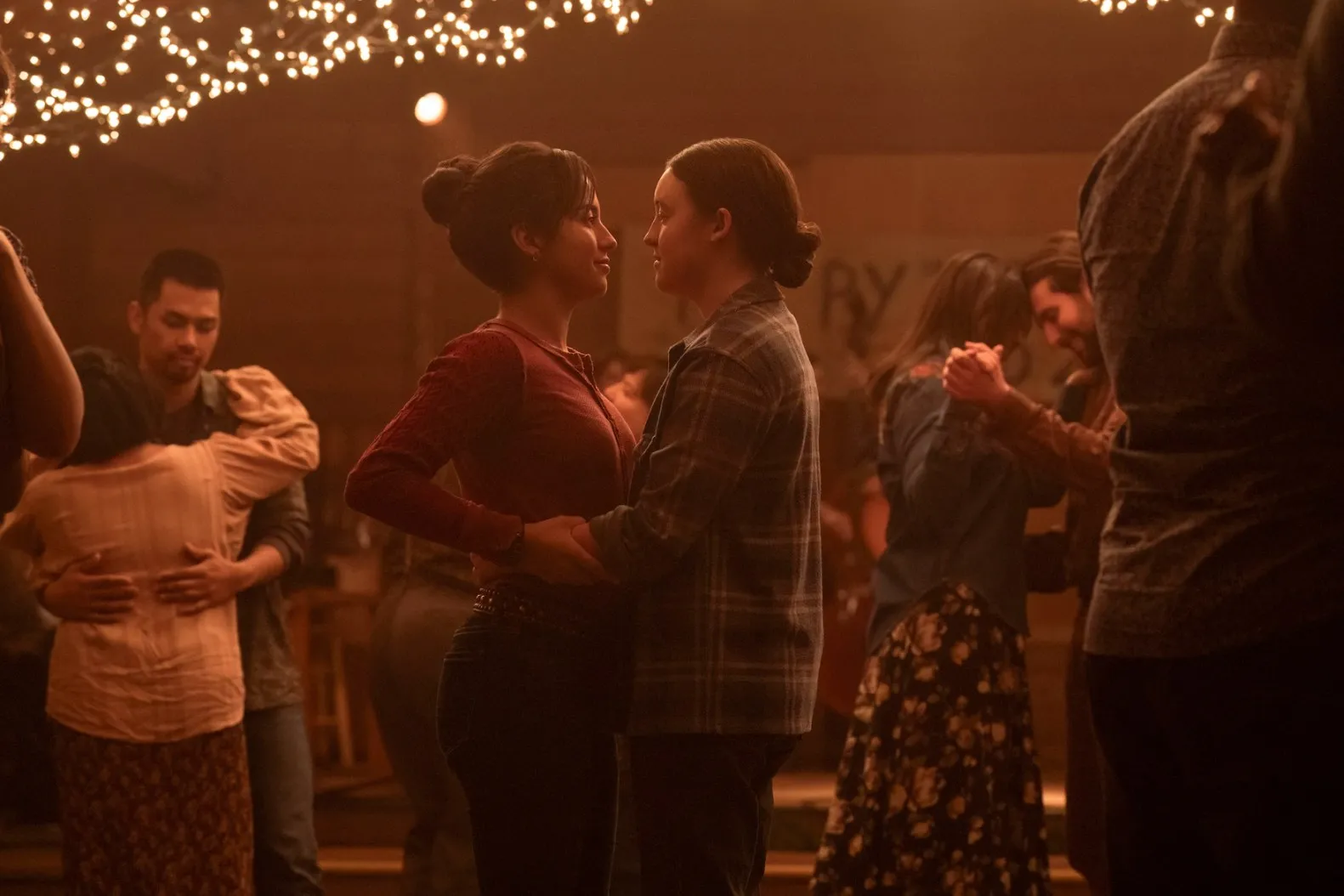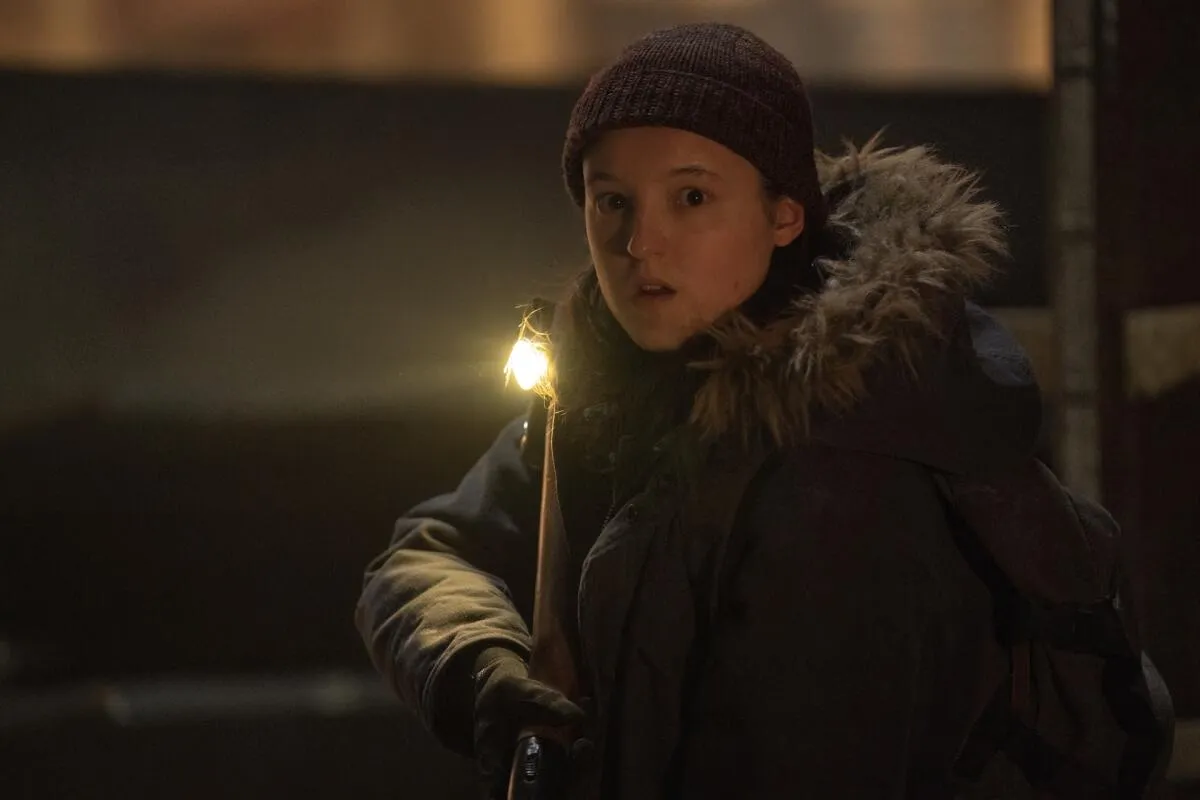The series introduces a realm reformed by a devastating fungal outbreak, where humanity lingers in scattered, hardened enclaves. In this universe, a virus has transmuted thriving metropolises into shadowy relics, places where nature reclaims territory with an almost poetic insistence.
Viewers are drawn to Jackson, Wyoming—a small bastion of routine amid sweeping desolation—where the remnants of civilization eke out existences tinged with past tragedies. (There’s a wry nod here to the idea that survival can be as mundane as attending a community dance.)
The narrative threads wind through the aftermath of earlier choices, with Joel and Ellie at its center. Their bond, tested by loss and the burdens of unspoken history, injects the tale with personal stakes that shimmer against the backdrop of a ravaged country. Fresh faces enter the stage, introducing disquieting challenges to the established order, and hinting at new ethical mazes without the need for explicit exposition.
The mood oscillates between intimate, almost claustrophobic moments and expansive sequences that burst with cinematic might. A subtle optimism dances with the pervasive threat of an ever-looming existential peril (a reminder that even in fractured worlds, the light sometimes dares to flicker).
The Chronology of Consequences
A five-year hiatus radically reorients the narrative. Time has not been gentle on these characters. Joel’s past acts linger like scars, affecting his interactions and decisions, while Ellie’s emerging self forces her into a world that punishes youth with harsh realities. (There is a dry irony here: time, as measured in years, cannot fully mend the psychological residues of betrayal.)
Flashbacks and parallel storylines serve as the narrative’s memory bank, offering glimpses into the choices that continue to haunt its participants. In these reinserted moments, we find evidence of the fallout from Joel’s past decisions—a burden that shapes the present with quiet authority.
Meanwhile, the progression of Ellie’s evolving path is interlaced with moments that question if her identity is as much about what she has lost as what she strives to become. In a twist of dramatic symmetry, Abby enters as an agent of reckoning, her quest for retribution punctuating the action with moral disquiet (if nothing else, her determination redefines what vengeance means in this broken world).
The sequence of events is underscored by dramatic confrontations and charged exchanges that mirror historical conflicts—think of a microcosm of civil disobedience colliding with the weight of personal pain. The narrative structure leverages these tension-filled pivots to blur the line between collective struggle and isolated vendetta. Unresolved enigmas dot the storyline like unanswered questions on an exam, leaving a lingering suspense that invites further speculation about the true cost of survival in a society under siege.
Faces in the Fire: Character Dynamics in a Post-Apocalyptic World
Joel’s evolution is painted with melancholy and bitter self-awareness. Once a hardened survivor, he now wanders the path of a conflicted guardian, burdened by choices that still haunt him. His therapy sessions (a surprising yet grounded touch) expose moments of raw vulnerability—a man wrestling with remorse and an endless procession of what-ifs.
These scenes, while introspective, bear an uncanny resemblance to historical accounts of wartime guilt, where every decision weighs heavy on the soul. One might even quip that his internal turmoil is a microcosm of post-conflict reckoning.
Ellie’s narrative unfolds with a spirit reminiscent of a reluctant rebel discovering the cost of freedom. Caught between the innocence of youth and the harsh lessons of survival, she battles internal conflicts linked to her identity and the legacy of her immunity.
Her quiet moments of introspection contrast sharply with bursts of fierce defiance, crafting a persona that is as enigmatic as it is relatable (imagine a street-smart sage in a brutal world). This constant oscillation mirrors societal struggles when tradition is forced to confront modern upheaval.
Abby bursts onto the stage as an irresistible counterpoint to Joel and Ellie, driven by personal loss and a relentless thirst for retribution. Supporting figures—Dina, Tommy, Maria—offer nuanced reflections of a society in shards, each interaction hinting at ethical dilemmas that echo the moral quagmires of historical revolts. The interplay between these characters is as subtle as a whispered debate in a smoky diner, and as bold as a protest in a public square.
The ensemble cast delivers portrayals marked by quiet intensity and unsaid sentiments. A single glance or the smallest hesitation often conveys more meaning than an elaborate monologue. Each gesture builds an intricate network of emotional dialogue that enlivens the screen with an ever-shifting spectrum of human intricacy.
Shadows and Echoes: The Weight of History
The narrative examines the lingering cost of choices made in a world stripped bare by apocalypse. The series focuses on how one’s past misdeeds constantly cast long silhouettes over the present, much like scars that never quite fade.
Joel’s history—his unrepentant actions and the unspoken guilt that follows—acts as a metaphor for the difficult reckonings seen after great historical conflicts (think of the moral reckonings post-war, where every decision becomes a quiet burden). Characters fight internal battles over personal errors, and every choice sends ripples through fractured relationships and a society on the brink.
Violence here does double duty: it is the harsh method of survival and also a vicious circle that promises no true liberation from its own consequences. The pursuit of revenge is laid bare, pitted against faint possibilities of forgiveness and personal atonement.
Scenes of stark brutality intertwine with moments that hint at relief—a rare smile, a fleeting moment of softness—that suggest a maddening conflict between satisfaction and regret (it’s as if the show winks at its own severity with a touch of gallows humor).
Identity, too, is a contested battleground. Characters like Ellie and Abby wear their past like an ill-fitting garment, each thread a reminder of inherited sorrows and mistakes. Their struggles portray the timeless clash between a self-forged future and a destiny burdened by history.
This tension is reminiscent of societal debates sparked by eras of upheaval; choices that seem forced by circumstance are often indistinguishable from those chosen freely, a paradox that makes one scratch their head and smirk.
Jackson itself stands as a microcosm—a small community fighting to rebuild under strict codes, where personal liberty often clashes with communal duty. Amid the series’ morally ambiguous moments, the ethics of right and wrong blur into shades of gray that leave viewers pondering the true cost of survival.
Decaying Splendor: Crafting a Dystopic Vista
The series presents a visual world where urban decay and nature’s relentless reclaim collide in startling images. Crumbling cityscapes bathed in muted hues contrast sharply with vibrant bursts that capture the remnants of a lost civilization. Each frame appears as a carefully constructed painting—ruined concrete intermingling with wild, untamed foliage (a nod, perhaps, to nature’s inevitable correction of human excess).
Jackson emerges as a fortified haven against a chaotic world, its architecture a patchwork of salvaged materials and time-worn design. Ruined buildings serve as silent storytellers of eras long gone, their every crack and peeling facade reflecting the internal conflicts of the community. Detailed set designs evoke a sense of palpable history, as if every relic in these bastions whispers secrets of past glories and long-faded dreams.
A particularly gripping sequence shows the infected charging through deserted avenues, the sheer scale of these scenes hitting with kinetic force. Flashy combat segments and moments of quiet introspection alternate rapidly—a chaotic burst of violent energy followed by the subtle vulnerability of a lone character caught in a fleeting pause. This tension between explosive action and restrained emotion encapsulates a visual dialect that speaks volumes about human fragility.
Sound and music operate as integral layers within this constructed world. A sparse, minimalist score punctuates the silence of abandonment, while ambient sounds intensify the physicality of each scene. These auditory details work hand-in-hand with visual cues, creating an immersive tapestry that leaves viewers with a lasting imprint of a society defined by its scars.
Tempo and Tension: Techniques of Narrative Rhythm
The series employs a methodical pace that skillfully shares plot details through flashbacks and a nonlinear structure. Brief glimpses of past events are interspersed with sudden, adrenaline-filled sequences. This intentional rhythm produces a layered effect, one where every moment counts. Some scenes hold a quiet intensity, while others burst forth with action, creating an arresting juxtaposition akin to pages of a well-worn history book.
Dialogue and interaction are not mere filler; they are tools for revealing internal strife and unspoken truths. There are instances when silence carries as much weight as a heated exchange. A pause in conversation here, a reflective gaze there—each choice allows the viewer to absorb subtle hints of deeper themes. (In some cases, the measured use of exposition creates a tension that is almost palpable.)
The editing shows a respect for time as a narrative device, one that balances backstory against a continuous forward thrust. The sequence of events is arranged to guide the mind through a maze of emotional and intellectual challenges. Every cut and transition is a deliberate nudge, urging the audience to consider what lies beneath the surface while enjoying a rhythmic ride through the series’ unfolding narrative.
Legacy of Turmoil and Transformation
This season intricately entwines personal predicaments with vast societal strife. The narrative lays bare family dynamics burdened by guilt and regret, framing every character’s evolution as a mirror of historical reckonings seen in moments of societal upheaval.
Joel’s anguished inner conflicts and Ellie’s stubborn defiance echo the echoes of past decisions that continue to burden entire communities (one might compare these weighty dilemmas with the scars left by prolonged civil unrest).
Striking visuals and measured dialogue meld with a script that interrogates the ethics of survival. The interplay between dynamic confrontations and muted, reflective pauses invites viewers to question the legacy of vengeance and the moral price of both retribution and forgiveness. Each frame, meticulously designed, draws subtle parallels to eras when reconciliation seemed nearly impossible, yet the human spirit persisted amid lingering devastation.
Unresolved plot threads and ambiguous character choices serve as seeds for future narratives. The series stands as a cultural mirror, holding up a reflective surface to contemporary issues of accountability and generational strife. Its layered storytelling insists that every decision, both small and monumental, contributes to a larger narrative of consequence—a narrative whose impact is palpable in its stirring, unyielding depiction of a world in permanent flux.
The Review
The Last of Us Season 2
An uncompromising spectacle intertwining personal sacrifice with societal decay, this series commands attention with its layered moral quandaries and striking visual precision. Its narrative, driven by raw performances and potent thematic currents, invites viewers to reckon with the legacy of past misdeeds. Although sporadic pacing quirks and narrative shortcuts temper its overall force, the work remains a provocative mirror of human struggle and resilience. Bold in its ambition and intellectually stimulating, it leaves a lasting impression on those willing to grapple with its complex portrait of consequence.
PROS
- Rich, multifaceted character development
- Striking visual storytelling and immersive production design
- Thought-provoking exploration of ethical dilemmas and societal decay
- Powerful, nuanced performances
- Engaging blend of action and introspection
CONS
- Occasional pacing inconsistencies
- Some narrative shortcuts leave lingering questions
- Ambiguous plot elements may frustrate certain viewers
- A few tonal shifts that disrupt immersion





















































